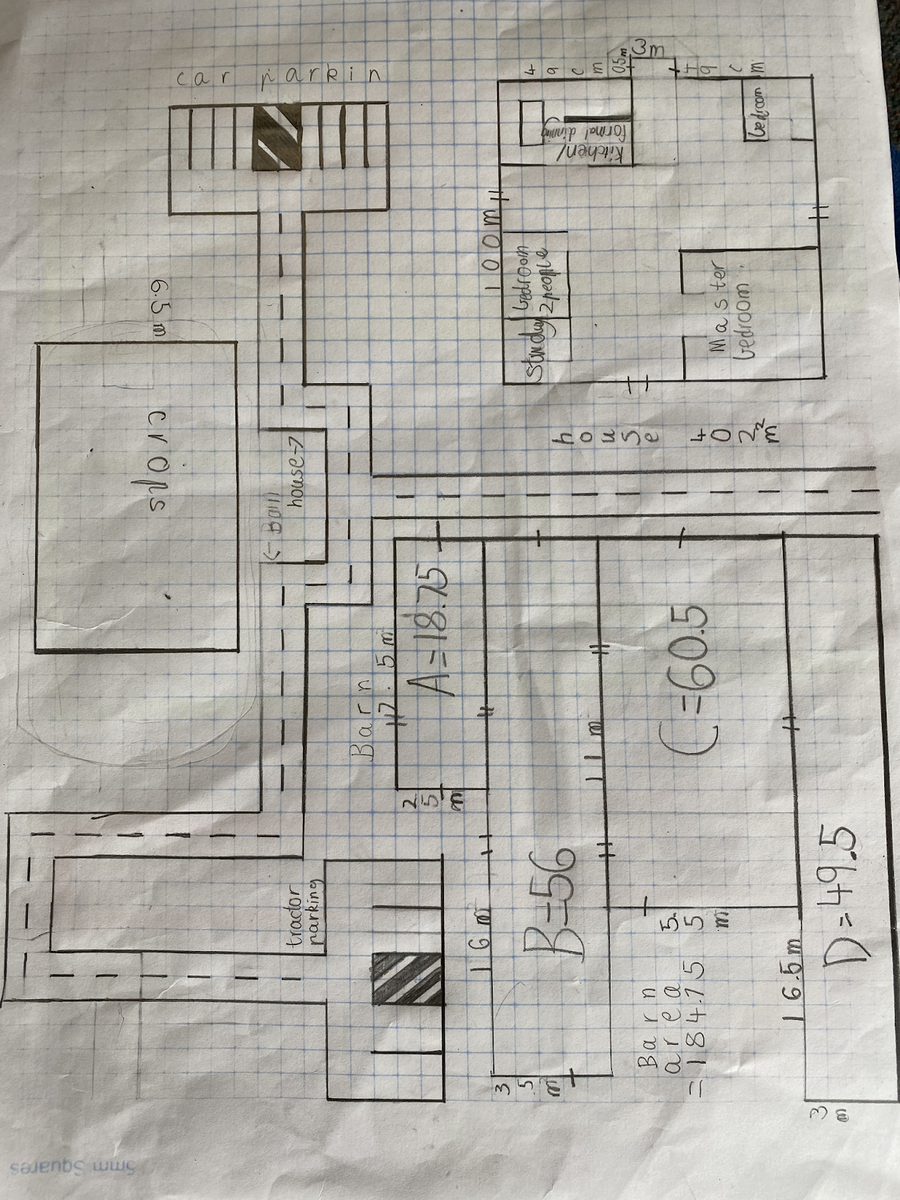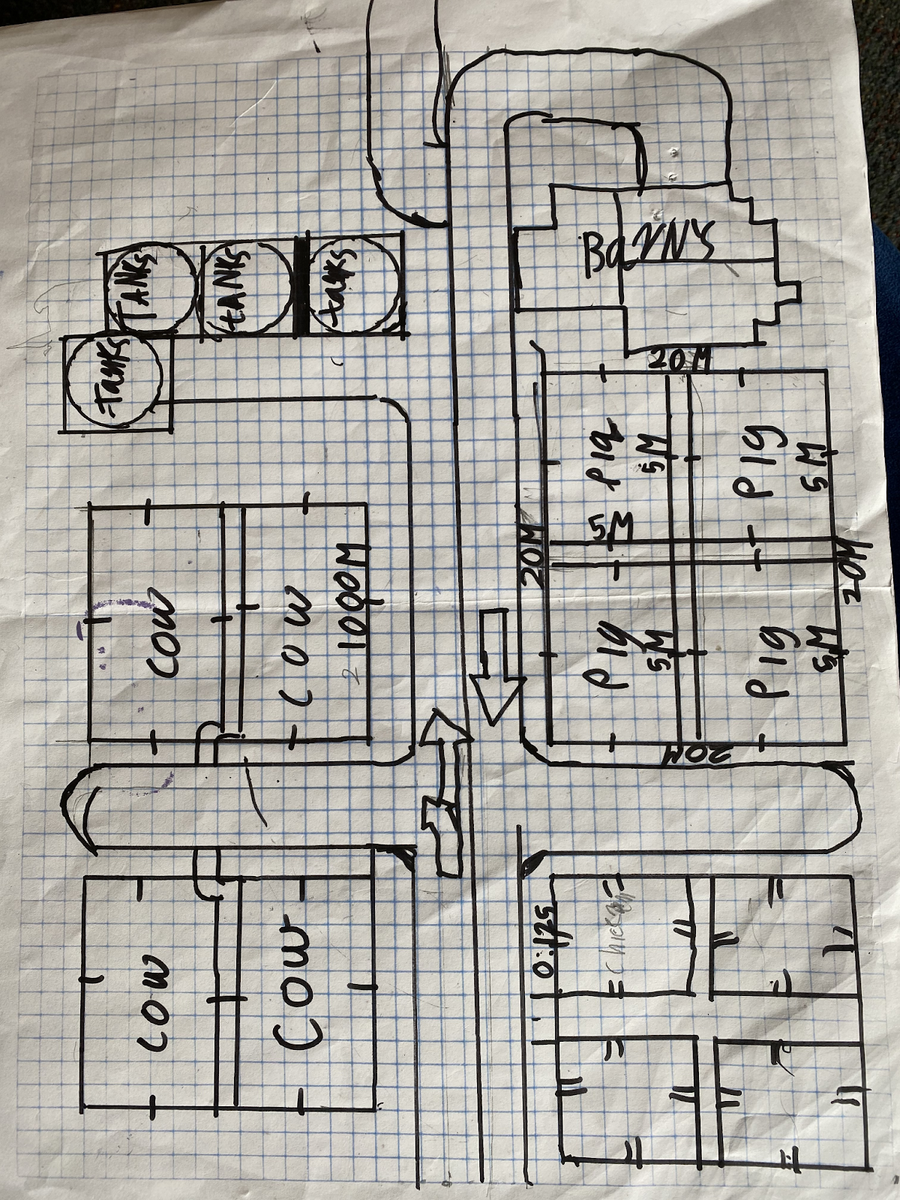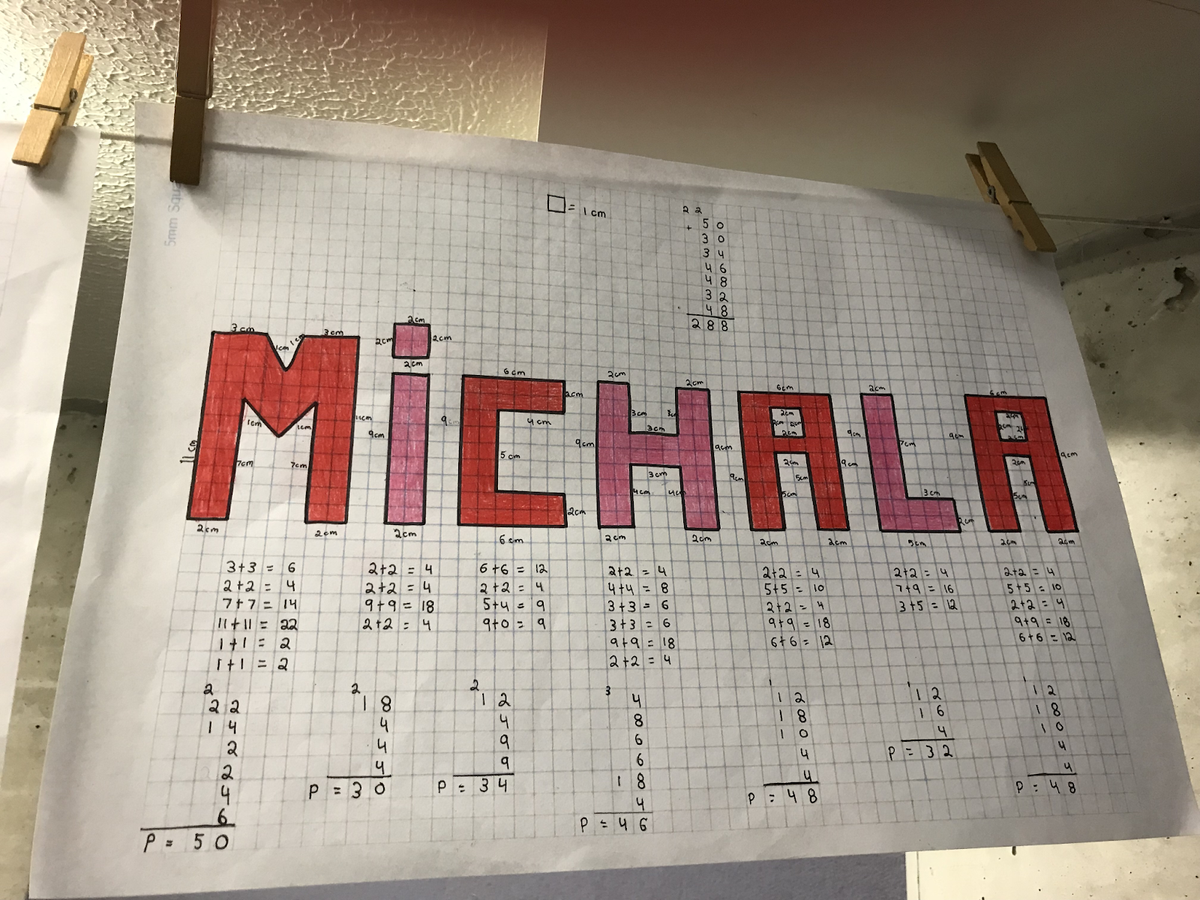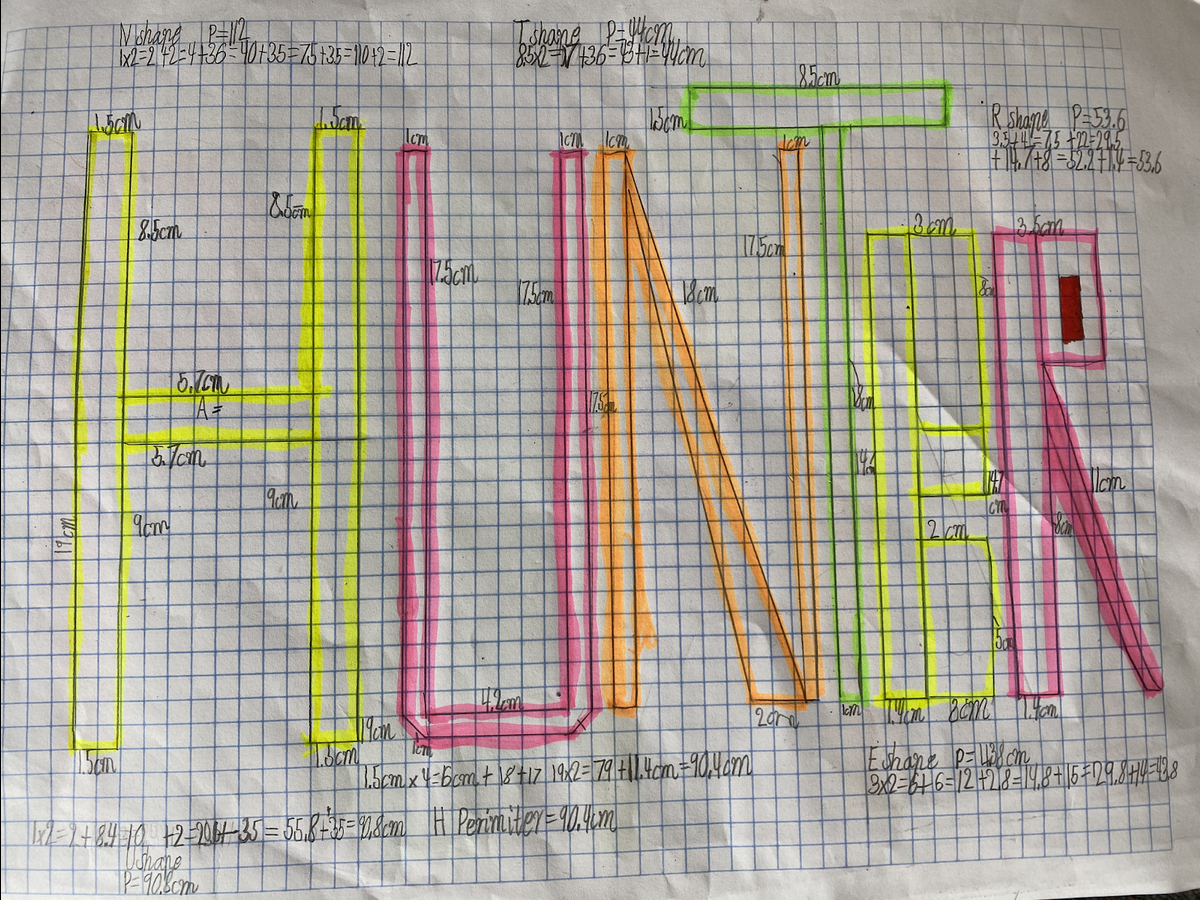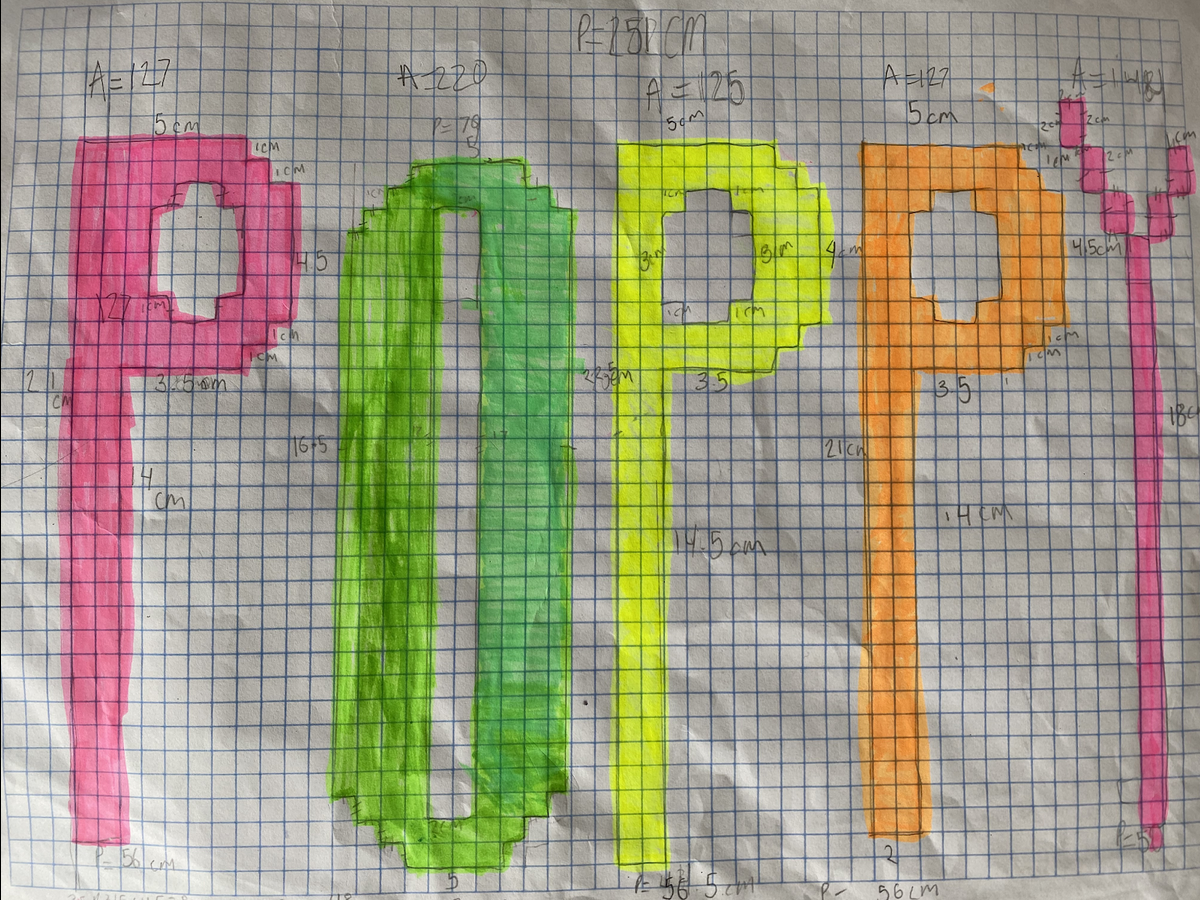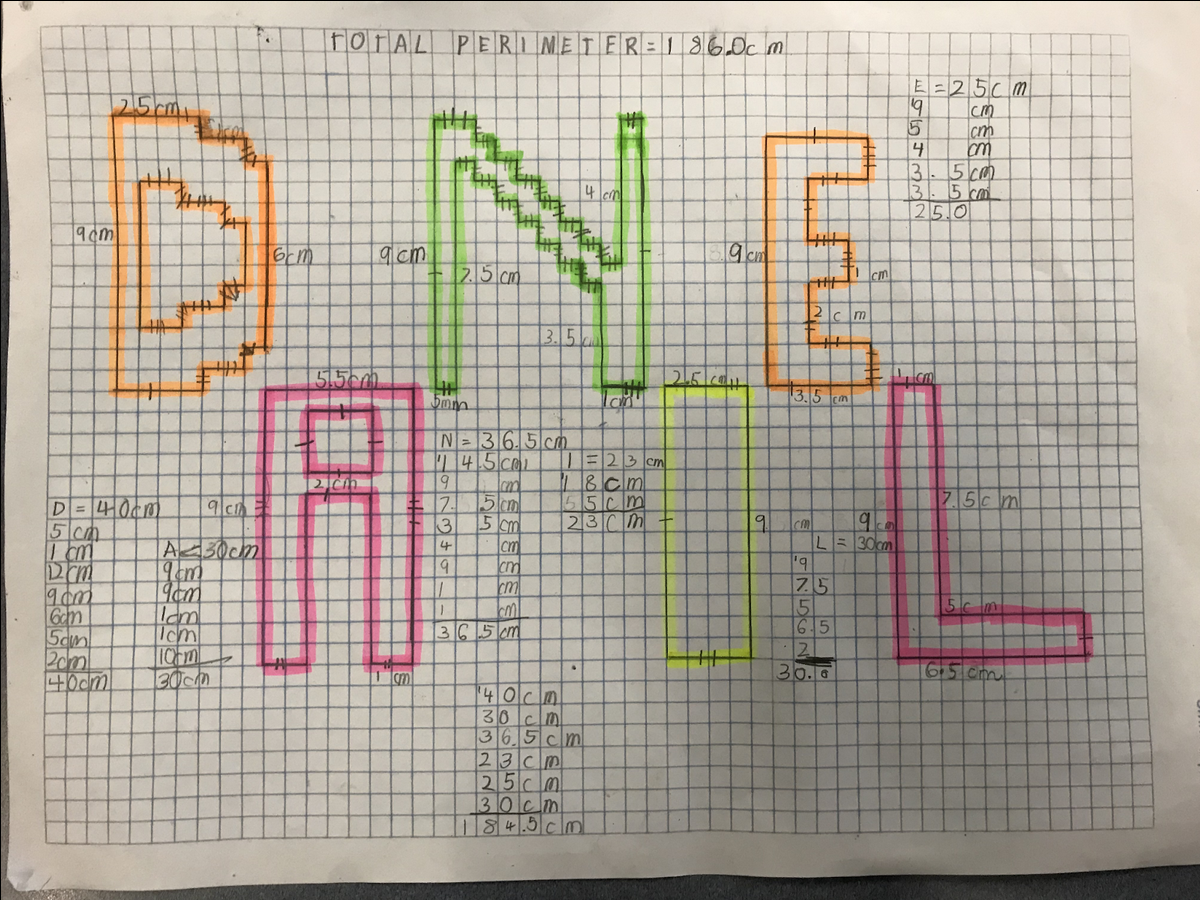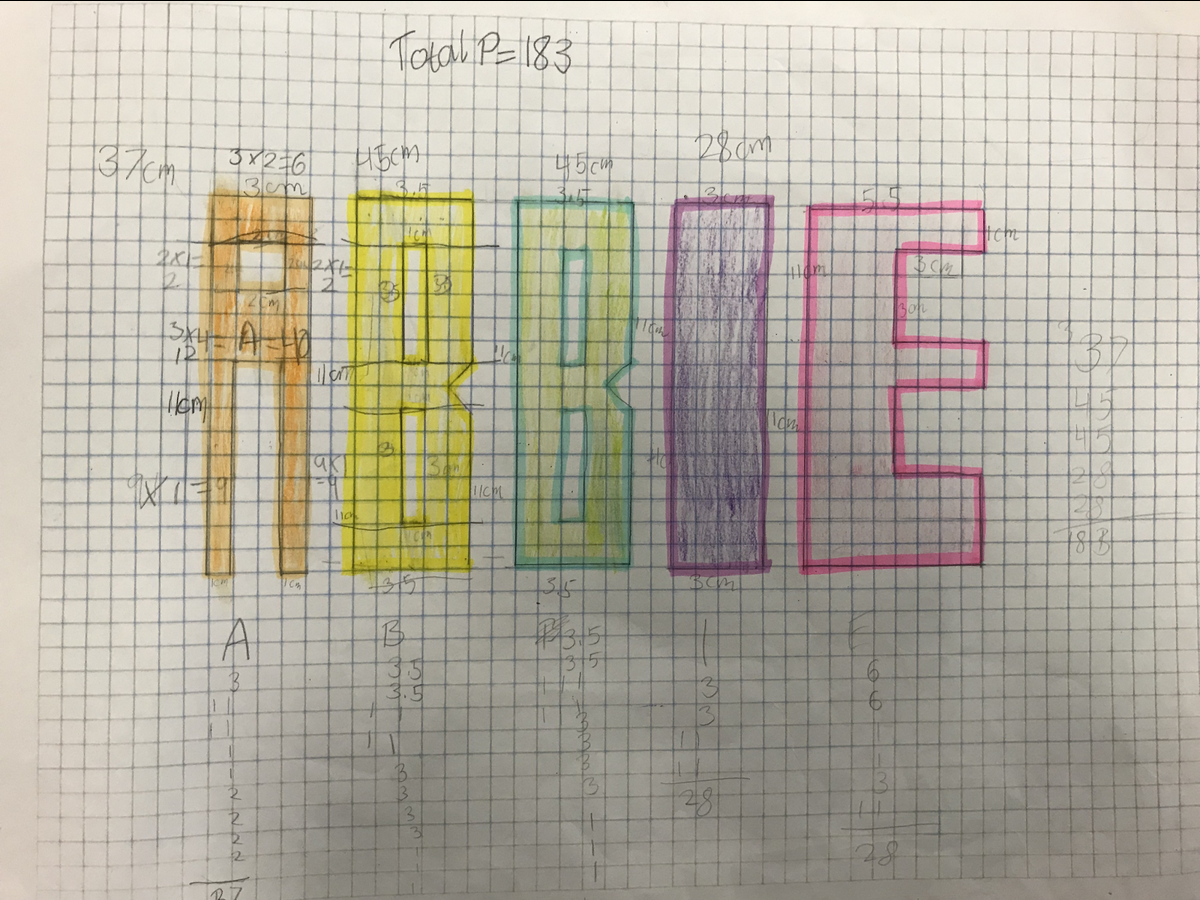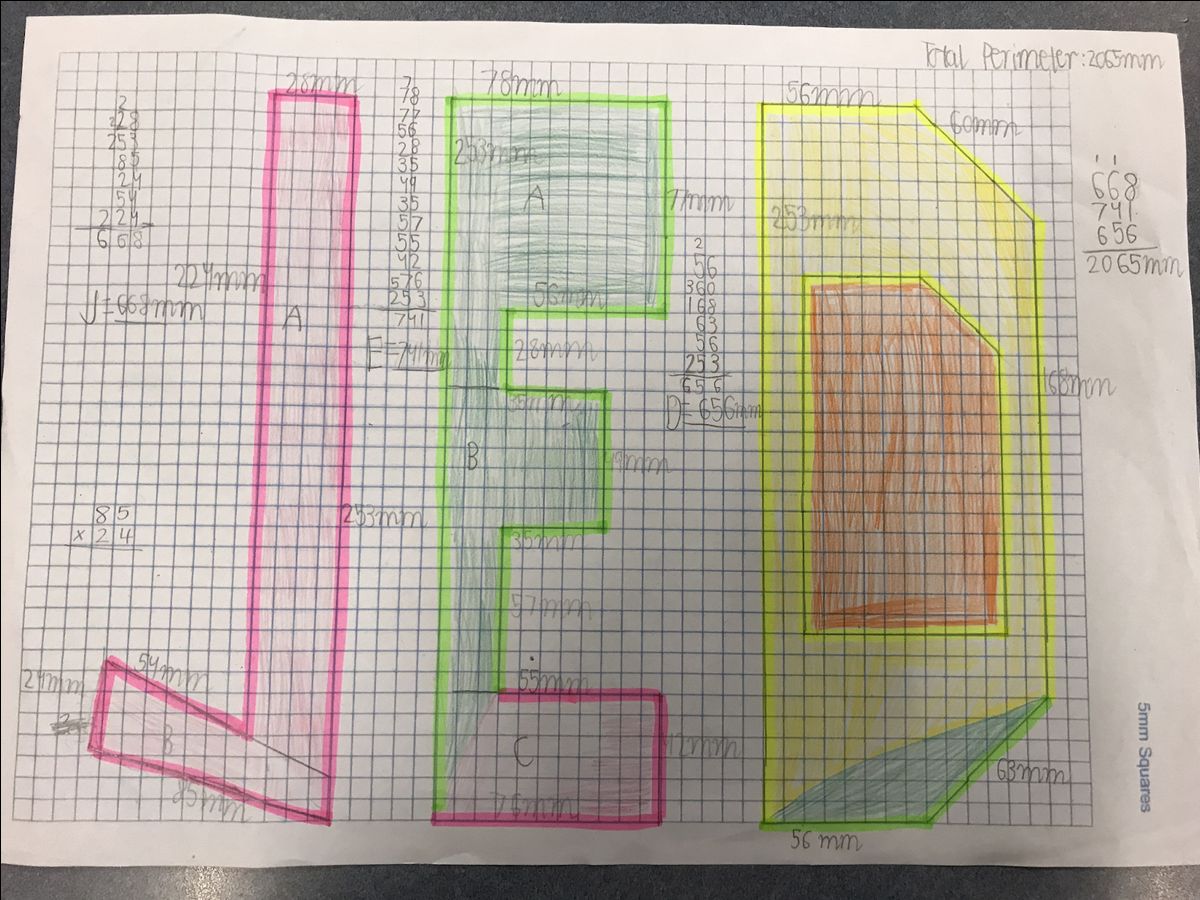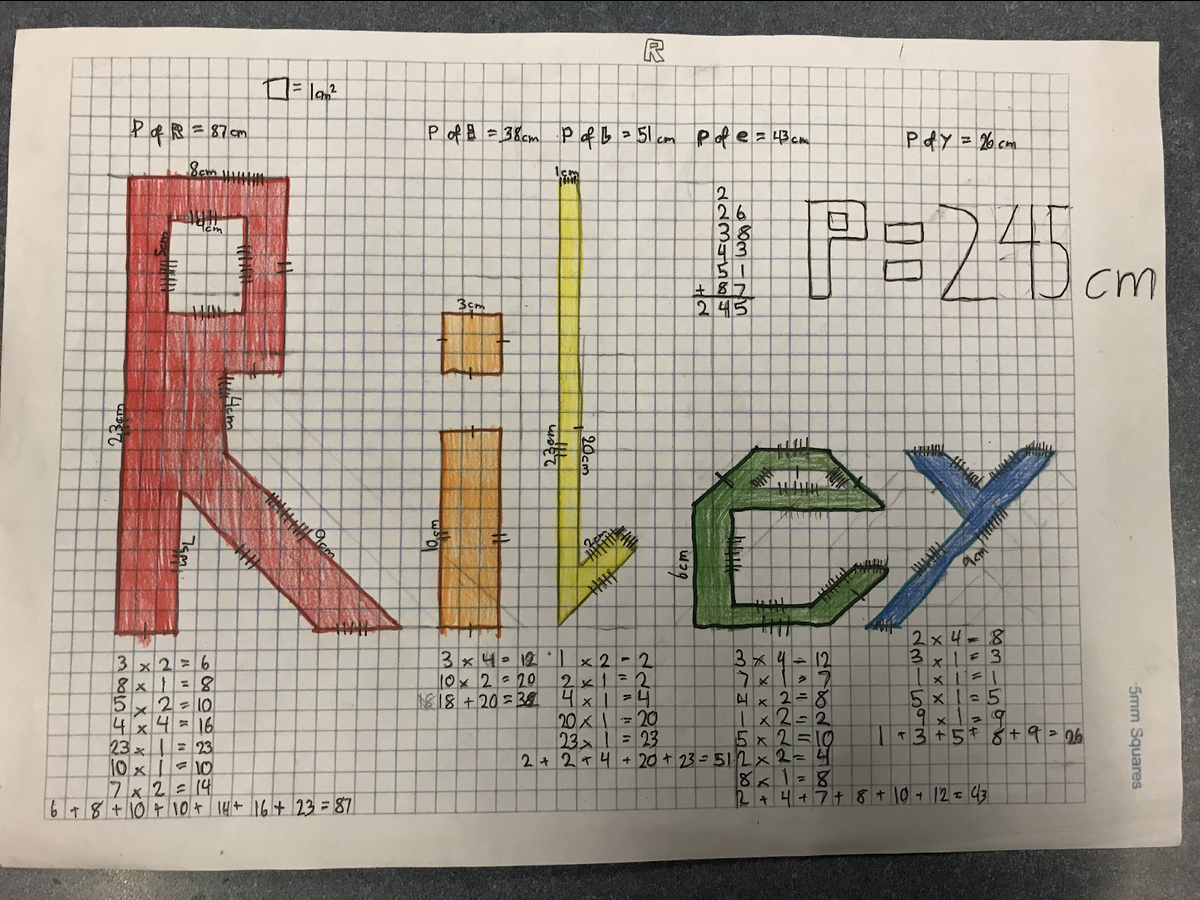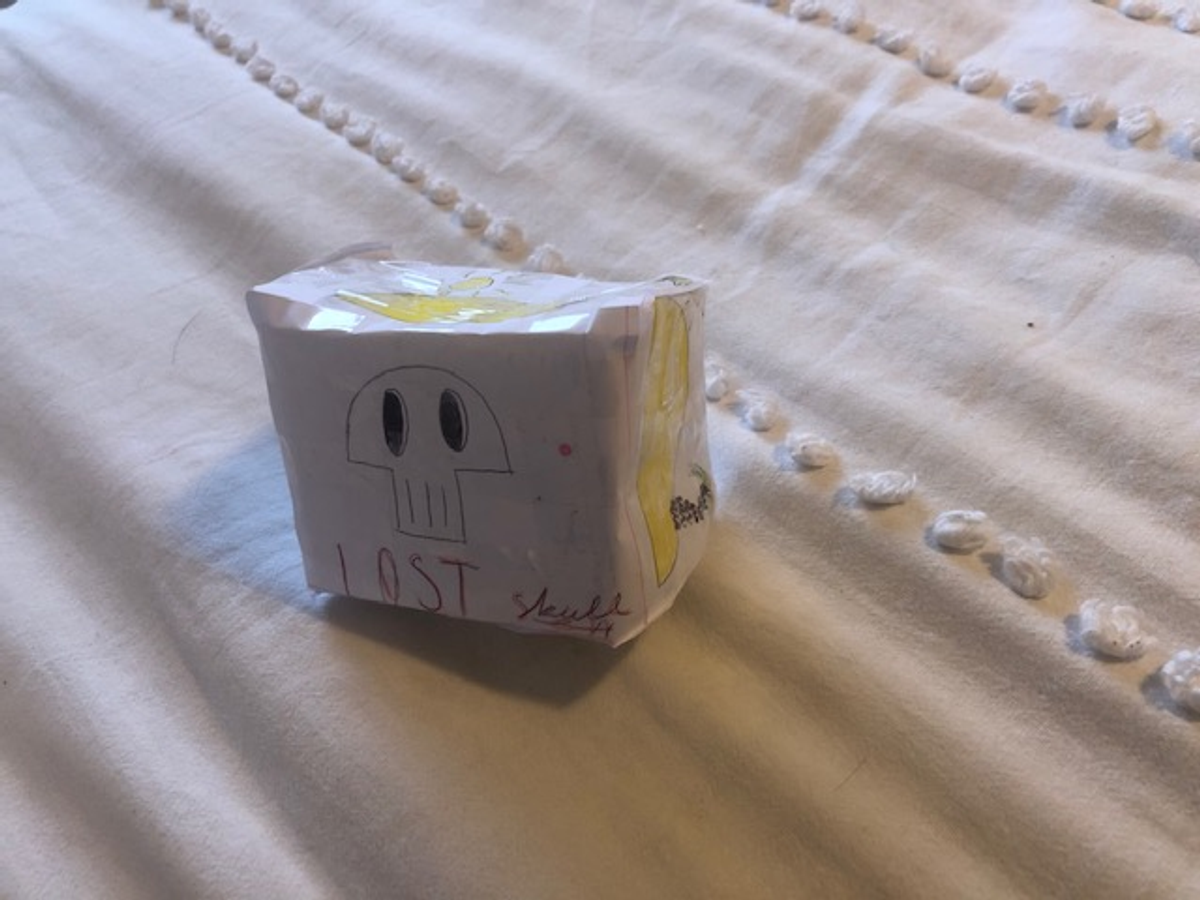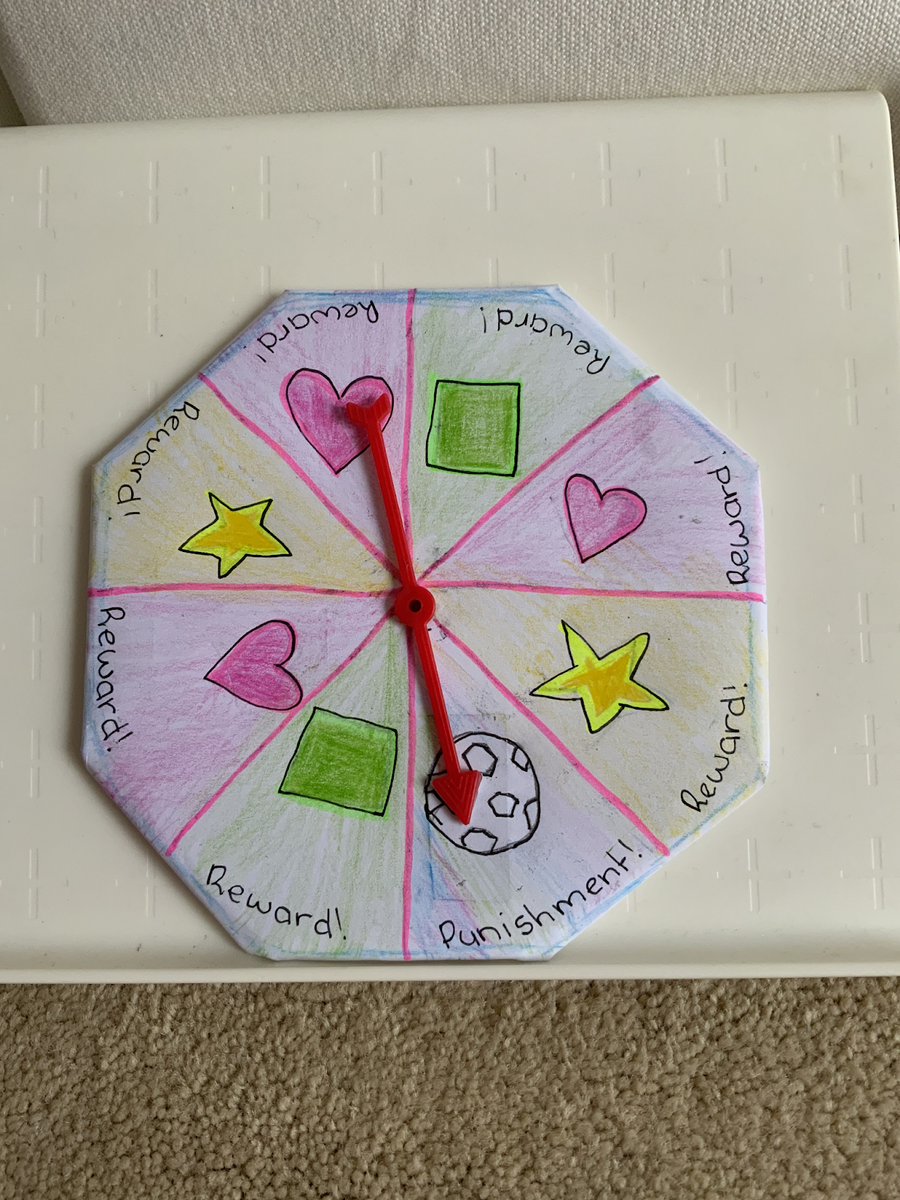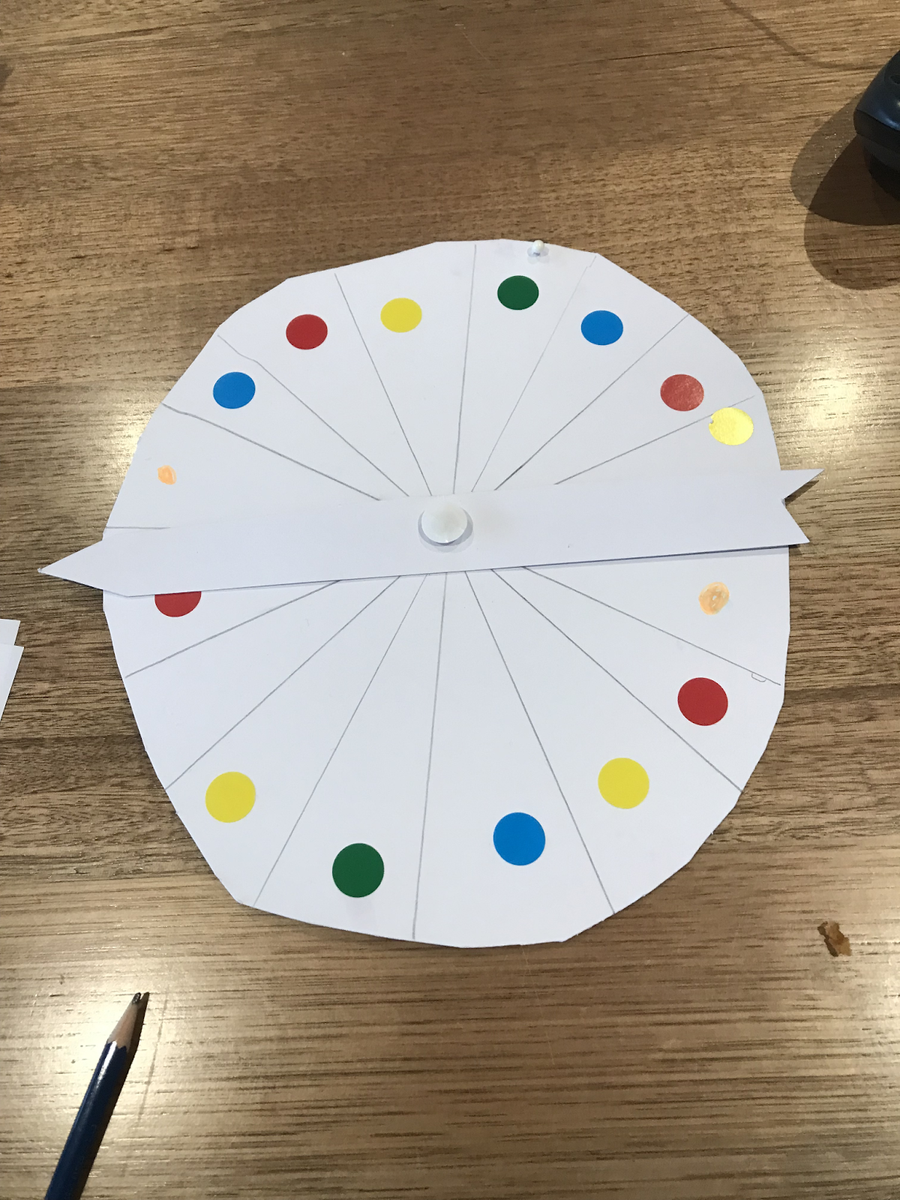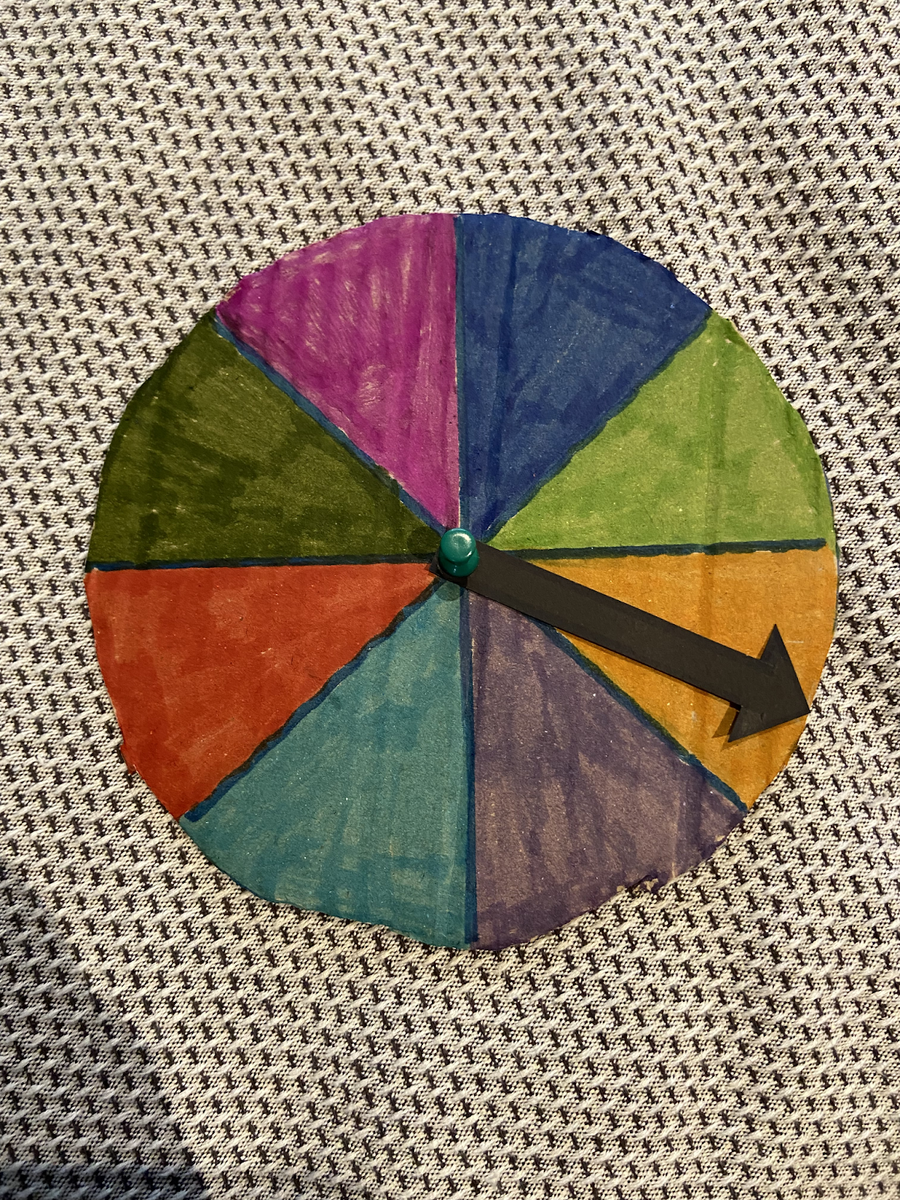Snapshot of Learning by Grade 5

A large amount of Mathematical research points to the need for mathematical inquiry, investigation and problem solving in mathematics lessons. Research studies demonstrate that when students discover mathematical ideas and invent mathematical procedures, they have a stronger conceptual understanding of connections between mathematical ideas. Mathematics that requires investigations, inquiry, and problem solving gives students the opportunity to use their imagination and develop their thinking skills. The Year Five students have been engaged in lots of creative math investigations this term with various Mathematical concepts such as perimeter, area and probability.
Area and Perimeter
Whilst learning about area and perimeter the Year Five students were tasked with designing a plan for a farm. The students were given a plot of land that had no fencing or lawn on it. It needed to have a house on the farm which had an area of 400m2 but the students could select its shape. Each farm needed to keep a range of animals that each required a certain amount of land. All of the animal types needed their own fenced area the right size for them. The Year Five students had to work out how much space each group needed. The teachers received some amazing plans for farms. Here are some of the amazing plans we received.
Whilst engaged in the same Area and Perimeter unit of work, the students wrote their names in block letters on grid paper so they could practise how to calculate the area and perimeter of irregular shapes. Here are some of the wonderful examples.
Chance and Probability
The last maths investigation was during online learning whereby the students completed a mini project called ‘Tricking Chance’. The Maths investigation required the students to trick people by creating a device that looked like it had a low chance of landing on a certain part, but in fact it would always land on it. Whilst engaged in this task the students were also learning how to represent chance as a fraction and then convert that fraction into a decimal and percentage. The teachers and students cannot wait to test them this week.
Here are some of the fantastic devices that were created...
A big thank you to Ms Barca, Ms Barbanti, Ms Spriggs and Mrs Pontin-Raj for creating these wonderful learning opportunities for your students in Mathematics!
Kindest regards
Monica Rayner
Teaching and Learning Leader

